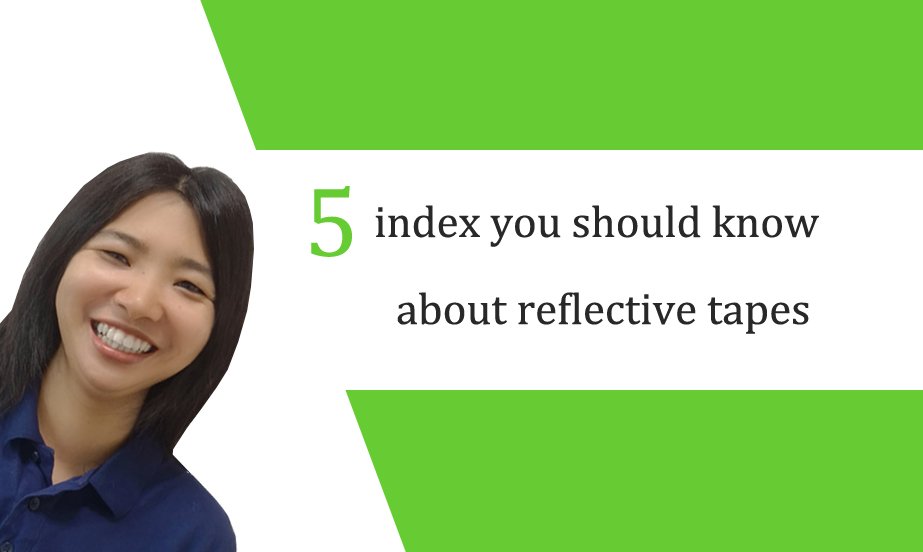Reflective tape is a safety warning material. The glass beads on the reflective safety tape can retro reflection the surrounding light at night, so that the light can return to people’s eyes as much as possible according to the original road traffic, so as to prevent passers-by and drivers to a certain warning effect. After years of continuous exploration and development, there are more and more types of reflective tape.
Reflective tape materials
According to different materials, price also vary, they can be divided into: high visibility ribbing, lattice reflective tape, fluorescence cloth, reflective tape, etc. which are widely used in hi vis vests, high visibility overalls, hi viz industrial clothing, hi vis jackets, hi vis raincoats, etc., Here are five knowledge about reflective tapes you should know before custom hi vis uniforms or reflectivity tapes.
1. Reflective tape elements
Reflective tape composed of three parts: base cloth + glass beads(microbeads) + adhesive, after build up and processing, they will cut into different strips.
The basic material here can generally be a chemical fiber or a plastic film. The basic material of the film is generally processed into a reflective sticker.
Glass beads about 67% of the total chemical composition are silica , as well as other substances such as calcium oxide, magnesium oxide, and sodium oxide. The particle size of glass microbeads is ranging from 50-450. According to the different requirements, you can choose a suitable microbeads, you can add two types of microbeads to achieve a suitable reflect effect.
Adhesive can be water-based acrylate emulsion, oil-based adhesive, or polyurethane adhesive. The main adhesive function of glue is to add glass microbeads without detaching from reflective base fabric. In order to achieve long-term stability of use, we should pay more attention to the quality of the glue, must be best in terms of long-term bonding firmness, washing resistant, aging resistant, acid and alkali resistant, etc., otherwise it may cause quality problems.
2. Reflection principle
When a beam of light irradiates the front surface of the microbeads at any angle within a certain range, due to the high refraction effect of the microbeads, the light is concentrated on the reflective layer on the rear surface of the microbeads, and the reflective layer reflects the light back. Regression reflection will be formed. When many glass beads are reflected at the same time, the bright scene in front will appear.
3. high visibility stripe
In general, the hi vis safety clothing divided into three Ansi class: class 1, class 2 and class 3.
Class 1: Normal reflective tape can be seen about 5 to 100 light, it is usually add in trousers.
Class 2: High-bright reflective tape in the range of 150 to 200 light, and it is usually used in sleeveless reflective safety vests.
Class 3: Hi-vis Bright silver reflective tape can be seen above 380, usually used on jackets and long sleeve shirts.
Usually we have safety clothing color in: red, orange, yellow, lime, green, green-yellow, orange red, blue.
4. Reflective safety tape washing times
There are 2 types of reflective tape washing times.
One is the washing times during production. Generally, the more good quality the reflective tape the more washing times, range from several times to hundreds of times depending on price and quality.
The other is the washing resistant times, which depends on the washing times during production. The higher the washing times, the higher the washing resistant times. Generally, the reflective tape can be washed more than 25 times.
5. Reflective fabric types
There are many kinds of reflective materials, from reflective fabrics, reflective thermal films, reflective webbing, flame-retardant reflective fabrics, to reflective yarns, lattice reflective tape, reflective edge wrapping, reflective leather, etc. Different reflective materials have different characteristics and uses.
According to the different base fabrics, the most common fabrics for reflective tapes are chemical fiber fabrics and T/C fabrics.
1. Chemical fiber, mainly uses polyester taffeta with specifications of T170 (soft type) and T190. Polyester taffeta is a kind of all-polyester thin fabric, the advantages of light texture, durability and easy washing, low price and good quality, etc.
2. T/C cloth, mixing polyester and cotton, is characterized by good texture and high strength. The general use standard is 65% polyester mixed with 35% cotton, but considering the cost and actual needs, most of the T/C fabrics currently use are 80% polyester and 20% cotton blend.
3. Flame retardant reflective tape, the composition of the flame retardant reflective stripe is different from that of the ordinary reflective tape. The cloth base components are aramid and cotton, They are much expensive than others.
Reflective tape not only widely use in hi vis safety clothing, but also use for other PPE (personal protective equipment) industry indoor and outdoor.
We can see reflective tape use on roadway traffic such as: trailers, trucks, cars, motro cycles. In rainy weather and extreme weather, the reflective tape can keep you in safety distance as warning. They are selling by roll, each roll about 50 yards.
The end, You can custom your own hi-vis uniforms due to your needs, keep safe and be seen.

